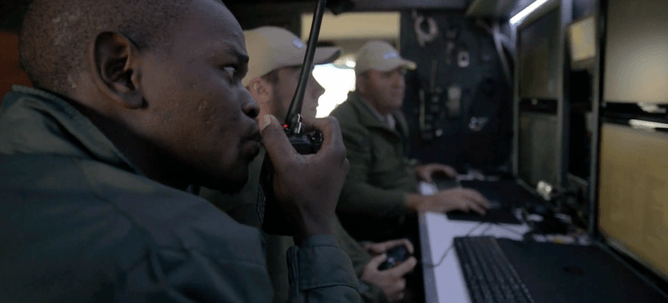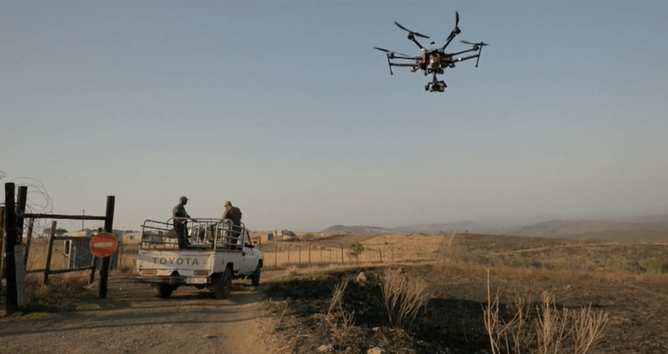The University of Maryland has a unique approach to tackling the issue of poaching in Africa – and their solution might not quite be what you’d expect.
The team are effectively poaching the poachers, by using satellites, mathematics, drones and on-ground support to catch the would-be killers before they can harm any animals.
As researcher Thomas Snitch explains in his piece on The Conversation: “We devise analytical models of how animals, poachers and rangers simultaneously move through space and time by combining high resolution satellite imagery with loads of big data – everything from moon phases, to weather, to previous poaching locations, to info from rhinos’ satellite ankle trackers – and then applying our own algorithms.
“We can predict where the key players are likely to be, so we can get smart about where to deploy rangers to best protect animals and thwart poachers.”

Inside the mobile unit. Collaboration between high tech data collectors and on-the-ground local experts is key. Thomas Snitch, CC BY-NC-ND
What’s interesting about their approach is that the research team doesn’t need to know where the poachers are – they just need to be able to find the rhinos.
“A large proportion of poachings occur on the days around a full moon; it makes sense since that’s when poachers can easily see their prey,” explains Snitch. “In one area where we have months of experience, we discovered that nearly every poaching occurred with 160 meters of a road. It’s simple. The poachers are driving the perimeter of the park in the late afternoon spotting animals near the park fence; they return just after sundown, kill the animal and drive away. We pile on the data, and the algorithms do the rest.”
Poaching in Africa claimed an estimated 1,215 rhinoceros and over 30,000 elephants in 2014, with the animals hunted for their horns and ivory tusks. But what the team at the University of Maryland has managed to accomplish with a little bit of maths is quite astonishing:
“The most important finding is that in every area where we have put our solutions package to work and the [drones] are flying, poaching stops with 5 to 7 days. Period – it stops.”
Now the team are moving into South Africa – they won’t say where or when exactly, but they’ll be there. And the wildlife will certainly be safer for a little mathematical protecting.
Read the full piece by Thomas Snitch at The Conversation – it’s a fascinating read and a testament to the multiple applications of mathematics. If you’re interested in mathematics and wildlife, you can also check out our career profiles on zoo keepers, equine studies, and forest carbon specialists.



